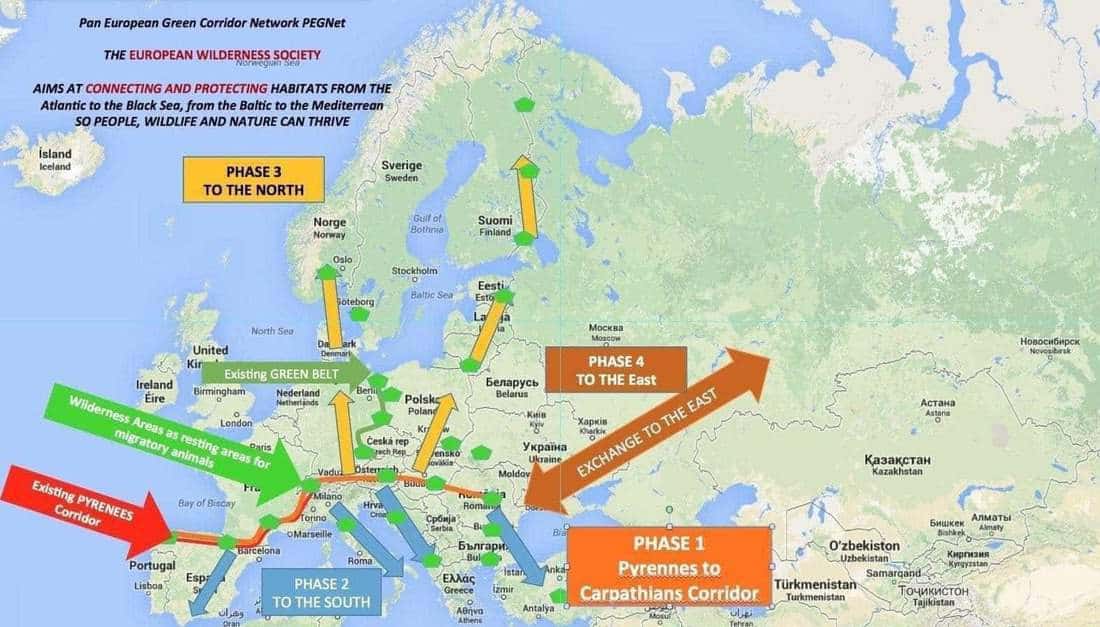Pan European Green Corridor Network

Project Idea to be submitted to the European Union.
Together with many other leading transboundary ecological corridor experts the European Wilderness Society decided to further develop the idea of a transboundary European ecological network in the Horizon 2020 call of the European Union.
This initiative aims at connecting not only protected areas and important ecological habitats on land and sea but also to connect the numerous excellent initiative focusing on this topic all across Europe.
Connecting the Atlantic to the Black Sea and the Mediterranean to the Baltic.
Europe is a highly fragmented continent. Vast areas of Europe’s last great wild places have also been transformed into urban zones or cut up by an increasingly dense transport network. Recent statistics from the European Environment Agency illustrate just how significant these changes are. In a single decade around 6% of EU territory has been covered with concrete or otherwise converted into completely artificial surfaces including industrial areas, holiday resorts and infrastructure. Europe’s motorways have increased in length by almost 41% (17,000 km) within that same period and will increase by 12,000 km in the years to come. In densely populated countries like Belgium, the average size of contiguous land units not dissected by major transport routes has been reduced to just 20 km2 (EU average is 130 km2).
A Pan-European Green Corridor Network offers a unique opportunity to recreate natural connections and routes throughout Europe, with Wild and Wilderness areas coupled with the Natura 2000 Network as resting and mating places for the migratory animals along these corridors regardless of they are on land or rivers or in the sea.
Project area

